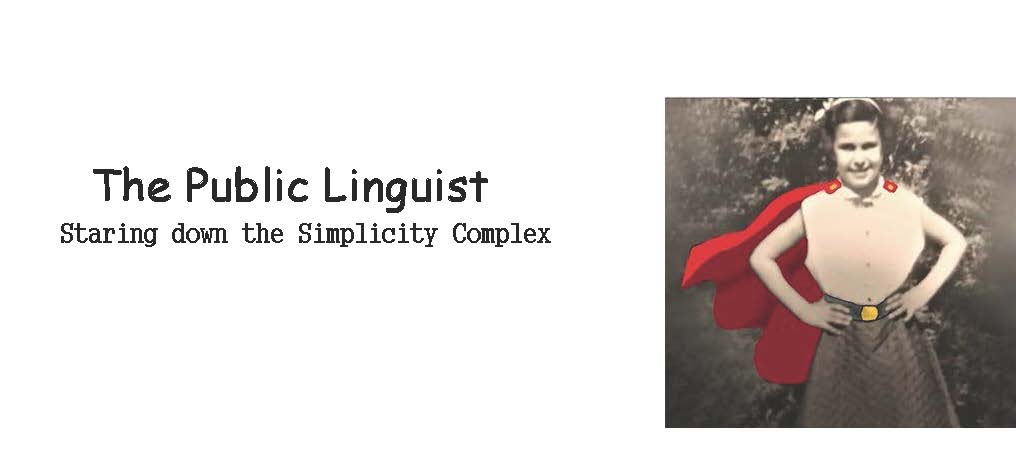Peter Coy writes today in the NYT Opinion page, "Why So Many Children of Immigrants Rise to the Top. " He’s writing about the a new book, “Streets of Gold: America’s Untold Story of Immigrant Success” (Ran Abramitzky & Leah Boustan). And the book's importance, among other things, is that it makes a convincing data - driven argument that the children of immigrants have been exceptionally good at moving up the economic ladder. This counters the unfounded and often corrosive claims that immigrants come here, wallow in poverty and live off the resources of the rest of us. The book is strong and so very needed in these times of baseless claims, lies and knee-jerk biases.
But, what also struck me today on the NYT page was the graphic the New York Times has created to visually tell this story. It’s just wonderful. So wonderful that I had to call your attention to it.
Why?
Because, as readers know, communicating complex information clearly is just plain hard and it's the space I’ve been burrowing in for decades. And numeracy is a big hurdle for the majority of adults in the US.
Numbers
Statistics
Risk
Infection rates
Inflation rates
Rates of mortality
Gas prices
Work force stats
Numbers
Statistics
Risk
Infection rates
Inflation rates
Rates of mortality
Gas prices
Work force stats
From working with money, budgeting for the increasing price of gas and transportation to watching the changing rates of Covid infection, to understanding some of the basics of all the geo-political information thrown at us in our 24/7 media world. It's easy to see how important understanding numerical information is in our lives – individual, social and political. It’s nearly impossible to escape the need to work with numbers in our daily lives.
But as sure as numbers are a central part of life and being informed and making good decisions, we are a nation of people who struggle to work with numbers. Almost 60% of adults are limited in what they can do with numbers/numeracy.
Numeracy is is our "capacity to access, process, interpret, communicate, and act on numerical, quantitative, graphical, biostatistical and probabilistic health information needed to make effective health decisions’ (Golbeck et al. 2005: 376).
It helps to think of numeracy skills in terms of: basic computation, analyzing with numbers,
working with statistics (Woloshin et al. 2001; Lipkus et al. 2001; Sheridan and Pignone 2002).
It’s easy to imagine how low numeracy interferes with what people understand about a huge range of things from personal finance to health risks, to socio-political arguments. What’s equally vital about low numeracy is that it’s often linked to susceptibility to pseudoscience. In his book Innumeracy (1989) Paulos states the US public’s poor numeracy skills often lead to a huge gap between expert and lay risk perception, a gap “that threatens eventually to lead either to unfounded and crippling anxieties or to impossible and economically paralyzing demands for risk-free guarantees” (Paulos 1989: 5)
Communications experts, researchers, writers and media sources who grapple with communicating numerical information have long been stumbling over ways to communicate effectively and accurately to the general public . Sometimes they fail dramatically (See post “Understanding health disparities in Covid vaccine access just got a lot harder.”
And sometimes graphic representations of data really win the day.
In today's NYT animated graphic we have the wonder of moving images, with a simple introductory statement and concluding recap unfolding-by-showing the narrative that most children of immigrants do not stay in poverty, but rather move up in economic status.
(As found in NYT Today 7/11/22)
https://www.nytimes.com/interactive/2022/07/11/opinion/immigrants-success-america.html
This engaging visual leaps over endless text to tell a story (BTW , the way most humans take in and retain information). (Apter and others studying numeracy recommend that using some kind of narrative to report and present numbers helps improve comprehension -Apter etal.2008, Mazor et al, 2007).
And then, the designers of this terrific data representation show the numbers - they don't avoid them. They don't deny the reader the ability to learn and continue to work with numbers. Redundancy of information - the number chart reinforces and elaborates on the animation!
I'm not often given to hero worship. But whoever designed this graphic is my local hero today! Thank you.
--------
Apter, A.J., Paasche-Orlow, M.K., Remillard, J.T., Bennett, I.M., Ben-Joseph, E.P., Batista, R.M., et al. (2008) ‘Numeracy and communication with patients: they are counting on us’, Journal of General Internal Medicine, 23(12): 2117–2124.
Golbeck, A., Ahlers-Schmidt, C., Paschal, A., and Dismuke, S. (2005) ‘A definition and operational
framework for health numeracy’, American Journal of Preventive Medicine, 29(4): 375–376.
Lipkus, I., Samsa, G., and Rimer, B. (2001) ‘General performance on a numeracy scale among highly educated samples’, Medical Decision Making, 21(1): 37–44.
Paulos, J.A. (1989) Innumeracy: Mathematical Illiteracy and its Consequences, New York: Hill and Wang.
Sheridan, S.L. and Pignone, M. (2002) ‘Numeracy and the medical student’s ability to interpret data’, Effective Clinical Practice (ECP), 5(1): 35–40.
Zarcadoolas, C. (2011) ‘The simplicity complex: exploring simplified health messages in a complex world’, Health Promotion International , 26(3): 338–350.
Zarcadoolas, C. and Vaughon, W. (2014). If numbers could speak: low numeracy skills and the digital revolution. In H. Hamilton and Chou, W- Y. (eds.), Routledge Handbook of Applied Linguistics and Health Communication, New York, NY, Routledge.




No comments:
Post a Comment